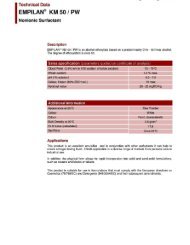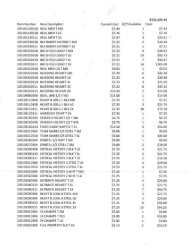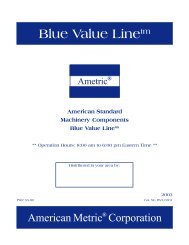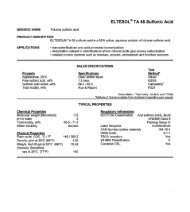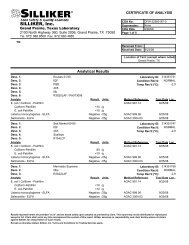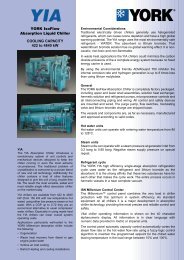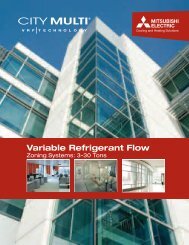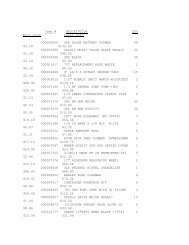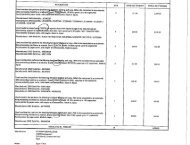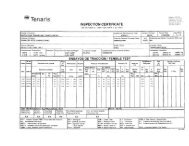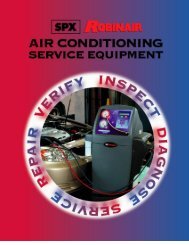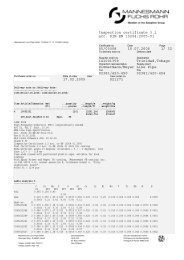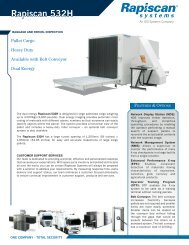Chip Blaster manual - Salvex
Chip Blaster manual - Salvex
Chip Blaster manual - Salvex
Create successful ePaper yourself
Turn your PDF publications into a flip-book with our unique Google optimized e-Paper software.
<strong>Chip</strong>BLASTER, Inc. 23<br />
12.0. OPERATION:<br />
12.1. ELECTRICAL OPERATION:<br />
12.1.1. Energizing CR1 will start the automatic operation on the coolant system and<br />
provide coolant out of solenoid #1. At this time the filter pump and the main<br />
drive will come on line.<br />
12.1.2. Energizing CR3 (index#1) will stop coolant flow out of solenoid #1 and place the<br />
unit into an idle condition. This state is primarily used for tool changes on turning<br />
center applications.<br />
12.1.3. De-energizing CR3 will return the unit to normal operation.<br />
12.1.2. The coolant systems return pump will run automatically and independent of<br />
CR1. This pump is controlled through the PLC via the tank level switch.<br />
12.2. COOLANT FLOW (Refer to figures 6 through 6b)<br />
12.2.1. Coolant flow is divided into two groups, High-pressure and Low-pressure.<br />
Low- pressure is the flow of coolant from the fourth compartment of the<br />
<strong>Chip</strong>BLASTER’s tank to the high-pressure pump. High-pressure is the flow of<br />
coolant from the high-pressure pump to the nozzle outlet or tool, at the<br />
machining center.<br />
12.2.2. LOW-PRESSURE – Low-pressure leaves the fourth compartment of the<br />
<strong>Chip</strong>BLASTER’s coolant tank and goes to the filter pump. The filter pump<br />
pumps the coolant into a large filter where it will be filtered to 5 micron. If a<br />
post-filter is used, it will be in series with the larger filter. If the filters gets dirty a<br />
flashing red lamp will give an alarm. After filtration, the coolant is then sent<br />
through a post filter which is used to protect the high pressure pump in the event<br />
the bag filter was incorrectly changed. A steady red light will indicate a dirty post<br />
filter. The coolant is sent to the high pressure pump.<br />
12.2.3. HIGH-PRESSURE - High-pressure coolant leaving the pressure pump goes to the<br />
manifold block, which consists of an unloader, 3000-psi (206 Bar) pressure<br />
gauge, solenoids, transducer, pulsation dampener and a pressure switch<br />
(optional). The unloader is adjustable to blow off coolant at 200 psi (13.7 Bar)<br />
above the normal running pressure to prevent any over pressure in the<br />
high-pressure coolant system. The blow off coolant is then returned to the first<br />
compartment in the <strong>Chip</strong>BLASTER’s tank through a check valve. The dampener<br />
unit is installed to dampen the fast changes in coolant pressure. A pressure gauge<br />
is installed to read the overall pressure between the high-pressure pump and the<br />
nozzle's outlet at the machining center. The transducer reads the overall pressure<br />
and produces an error voltage that is fed back to control the speed of the variable<br />
drive(1AFD). The optional pressure which is only used to produce an error signal<br />
if there is a reduction of pressure below 300 psi (20.6 Bar). The solenoids are<br />
used for diverting the coolant for different machine operations.<br />
The high-pressure coolant leaves the manifold block and flows through the<br />
machining center to the tool being used.<br />
12.1 – 12.2




